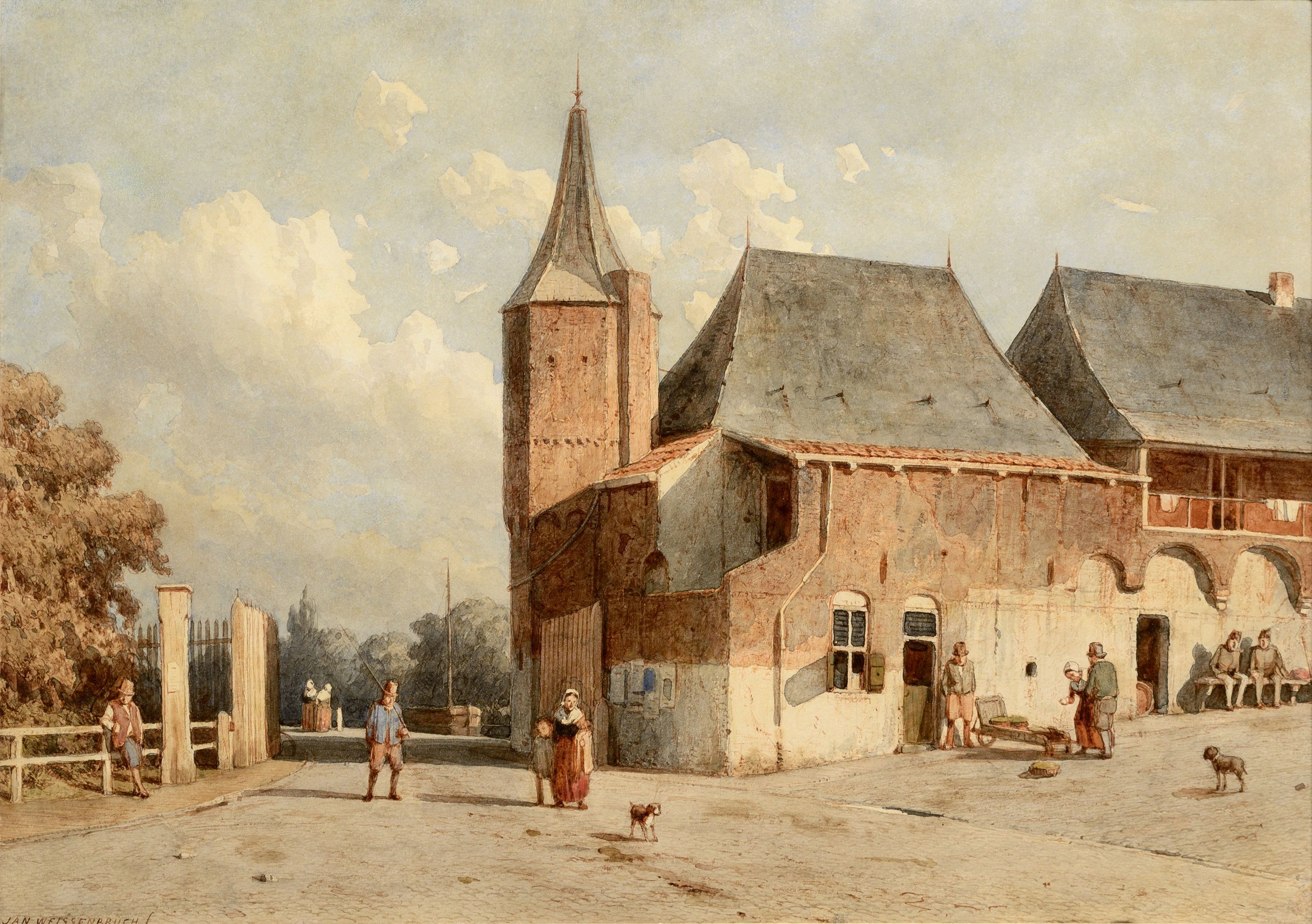J. (JAN) WEISSENBRUCH 1822 Den Haag - 1880 Den Haag The Koppelpoort in Amersfoort
Watercolor / Paper: 27,5 x 39 cm
- This artwork can be viewed in our gallery
- Call us for more information: +31 26 361 1876
- World wide shipping available
Width: 39 cm
Kunsthandel P.A. Scheen, The Hague, 1979
Private Collection The Netherlands
Pieter A.Scheen, "Lexicon Nederlandse Beeldende Kunstenaars", 1980, no. 113 (ill.)
Drs. B.G.J. Elias, "Een gezicht op de Koppelpoort te Amstersfoort", Flehite, een tijdschrift voor verleden en heden van Oost-Utrecht, April 1982, volume 14, no. 1, p. 2
Over J. (JAN) WEISSENBRUCH
Johannes Weissenbruch, better known as Jan Weissenbruch, was one of the most famous urban painters of the nineteenth century. He was not only a well-known painter, but also achieved fame as a watercolorist, draughtsman, lithographer and especially as an etcher. He was a cousin of visual artist Jan Hendrik Weissenbruch. He took courses at what would later be called the Royal Academy of Art.From 1839 to 1847, he trained at the Hague Academy. He loved the old Netherlands with city gates and city walls. City gates fascinated him because this was the transition between city and countryside, that is, between the bustle of the city and the quiet of life outside. Many city gates disappeared, but thanks to Weissenbruch, they were captured before demolition. Light and shadow plays a major role in his work. He painted realistically, but he often adapted the atmosphere by changing it to his liking. For example, he widened streets or removed houses for this purpose. He preferred to paint everyday life, such as women doing laundry or merchants at the market. Besides being an artist, Weissenbruch was also a restorer and art collector. Among other things, he collected drawings, prints and books.

